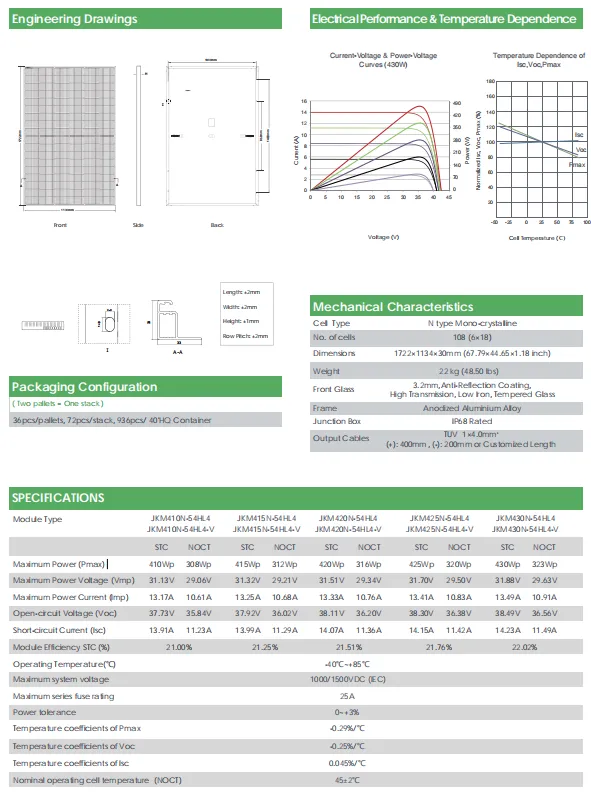solar panel efficiency indirect sunlight
The Impact of Indirect Sunlight on Solar Panel Efficiency
Solar energy has emerged as one of the most sustainable and environmentally friendly sources of power available today. With advancements in technology, the efficiency of solar panels has improved significantly. However, a key factor affecting their performance is the quality and intensity of sunlight, particularly when considering indirect sunlight. This article delves into the relationship between solar panel efficiency and indirect sunlight, exploring how various factors can influence output and what steps can be taken to optimize performance.
Understanding Solar Panel Efficiency
Solar panel efficiency refers to the percentage of sunlight that a solar panel can convert into usable electricity. The efficiency of panels typically ranges from 15% to over 22% for commercial products, with some high-efficiency models reaching even higher. Traditional silicon-based panels, such as monocrystalline and polycrystalline solar panels, differ in efficiency due to their construction materials and technology.
Indirect sunlight, on the other hand, occurs when sunlight is diffused by atmospheric conditions, such as clouds or pollution, or when it reflects off surfaces like buildings or bodies of water. While direct sunlight is indeed more effective for solar energy generation, indirect sunlight can still contribute to energy production under certain conditions.
The Influence of Indirect Sunlight
1. Intensity and Angle of Incidence The effectiveness of solar panels under indirect sunlight greatly depends on the intensity of the light and the angle at which it strikes the panels. Panels that are optimized for capturing light at a variety of angles can perform better even in less-than-ideal lighting conditions. Some modern solar panels come equipped with tracking systems that adjust the panel's position in relation to the sun, maximizing exposure to both direct and indirect sunlight throughout the day.
2. Panel Type The type of solar panel plays a crucial role in efficiency under indirect sunlight. Thin-film solar panels, for instance, can perform slightly better than traditional panels in low-light conditions due to their ability to absorb a broader range of wavelengths. However, they usually have lower overall efficiency under direct sunlight.
3. Environmental Conditions Factors such as weather, atmospheric clarity, and geographical location have a significant impact on how much indirect sunlight is available. Areas with overcast skies might see solar panels generate energy primarily from indirect sunlight, especially in regions with prolonged cloudy conditions. This underscores the importance of selecting solar technologies that can maximize energy generation under varying atmospheric conditions.
solar panel efficiency indirect sunlight

Maximizing Efficiency in Indirect Sunlight
To optimize solar panel efficiency when faced with indirect sunlight, several strategies can be employed
1. Optimal Placement The placement of solar panels can significantly impact their performance. Positioning panels to capture maximum ambient light, such as on rooftops that are free from shading by nearby trees or buildings, can enhance energy production.
2. Use of Reflectors Incorporating reflective materials around the solar panels can help redirect more light onto the panels, improving output in conditions where direct sunlight is minimal. This method can be particularly effective in urban environments.
3. Adopting Advanced Technologies Emerging technologies such as bifacial panels—which can capture light from both sides—have shown promising results in enhancing efficiency, especially when indirect sunlight is present. Additionally, incorporating energy storage systems allows for better utilization of the energy produced during peak indirect sunlight periods.
4. Regular Maintenance Keeping solar panels clean and well-maintained is crucial for efficiency. Dust and grime can block light, reducing the energy produced in all conditions, including indirect sunlight.
Conclusion
While direct sunlight undoubtedly yields the highest efficiency for solar panels, understanding the dynamics of indirect sunlight can provide valuable insights into maximizing output. As solar technology evolves, the importance of optimizing energy generation in a variety of environmental conditions cannot be overlooked. By harnessing the potential of indirect sunlight, we can push the boundaries of solar energy efficiency further, contributing to a more sustainable and green future. The ongoing research and development in solar technologies will undoubtedly uncover new methods for improving energy production, making solar power a more viable solution in diverse climates and conditions.
-
Understanding the Advantages of Solar String Inverters for Your Energy SystemNewsApr.29,2025
-
Choosing the Right PV Inverter: A Comprehensive GuideNewsApr.29,2025
-
The Future of Solar Power: Exploring Bifacial Solar PanelsNewsApr.29,2025
-
The Complete Guide to Solar Panels: Efficiency, Cost, And InstallationNewsApr.29,2025
-
The Best Options for Efficiency and Cost-EffectivenessNewsApr.29,2025
-
Harnessing the Power of Off-Grid Solar Inverters for Energy IndependenceNewsApr.29,2025







